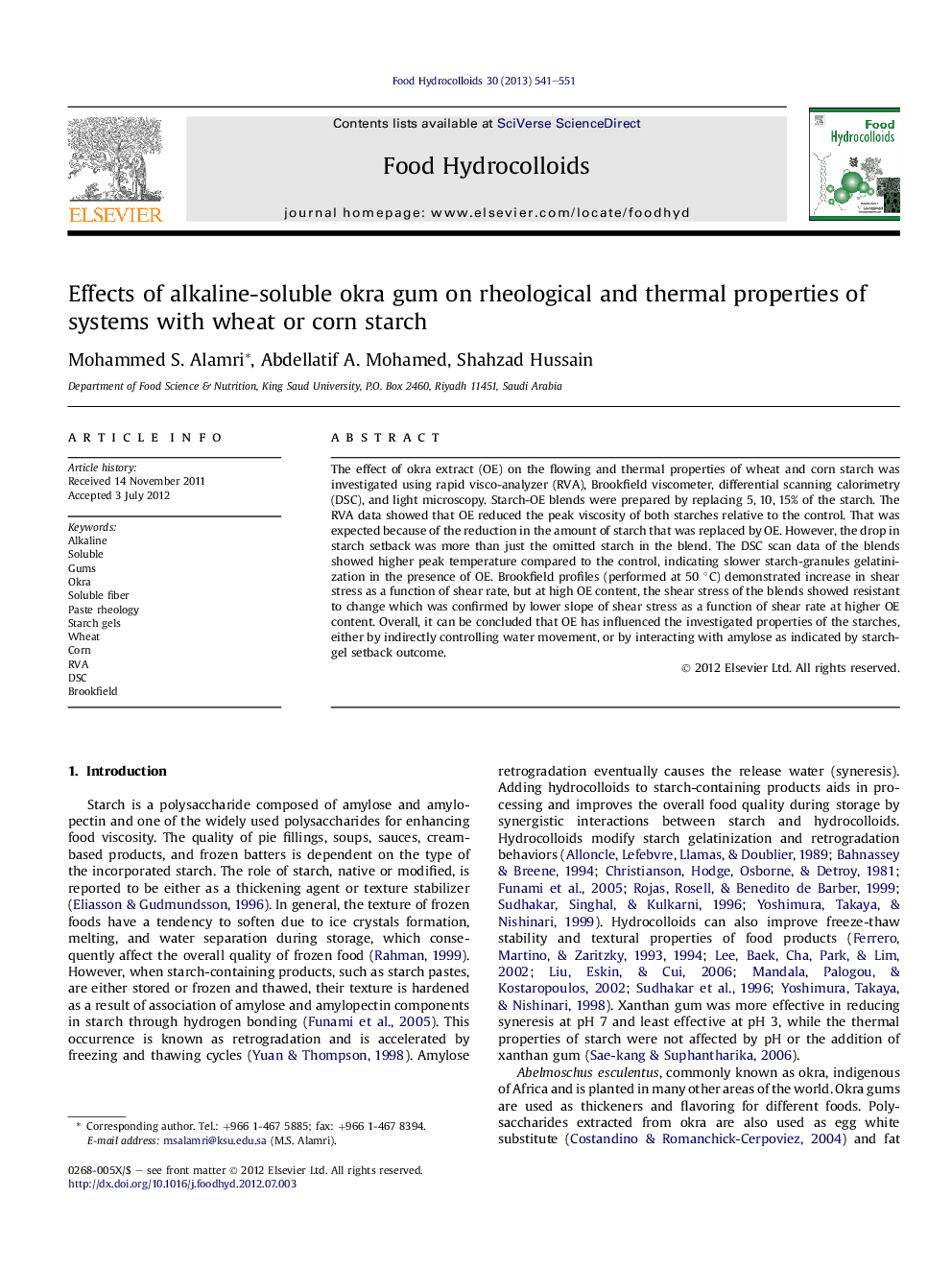| Article ID | Journal | Published Year | Pages | File Type |
|---|---|---|---|---|
| 604073 | Food Hydrocolloids | 2013 | 11 Pages |
The effect of okra extract (OE) on the flowing and thermal properties of wheat and corn starch was investigated using rapid visco-analyzer (RVA), Brookfield viscometer, differential scanning calorimetry (DSC), and light microscopy. Starch-OE blends were prepared by replacing 5, 10, 15% of the starch. The RVA data showed that OE reduced the peak viscosity of both starches relative to the control. That was expected because of the reduction in the amount of starch that was replaced by OE. However, the drop in starch setback was more than just the omitted starch in the blend. The DSC scan data of the blends showed higher peak temperature compared to the control, indicating slower starch-granules gelatinization in the presence of OE. Brookfield profiles (performed at 50 °C) demonstrated increase in shear stress as a function of shear rate, but at high OE content, the shear stress of the blends showed resistant to change which was confirmed by lower slope of shear stress as a function of shear rate at higher OE content. Overall, it can be concluded that OE has influenced the investigated properties of the starches, either by indirectly controlling water movement, or by interacting with amylose as indicated by starch-gel setback outcome.
Graphical abstractFigure optionsDownload full-size imageDownload as PowerPoint slideHighlights► Okra-extract reduced the peak viscosity and setback of wheat and corn starches. ► Starch-okra blend behaved as pseudoplastic material. ► Blends exhibited lower viscosity and higher shear stress at higher shear rate. ► Shear stress as a function of shear rate showed lower slope at higher okra extract. ► Okra extract influenced starch gelatinization and water mobility of the system.
